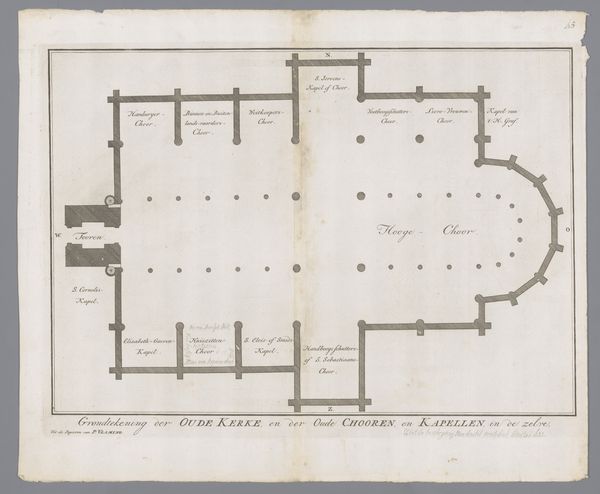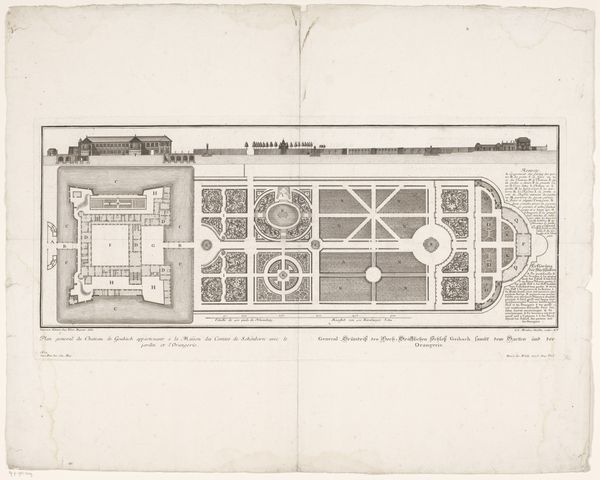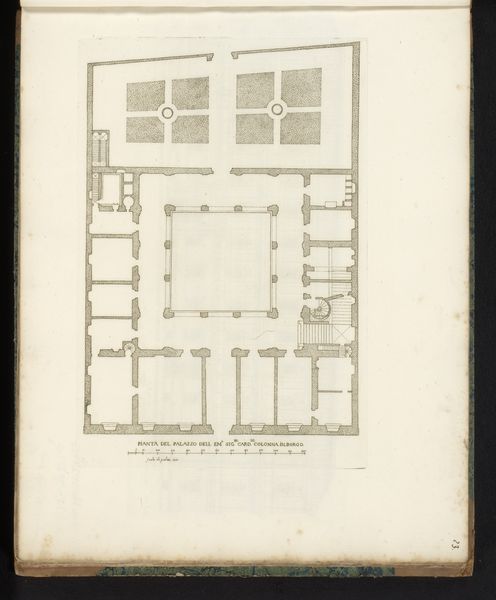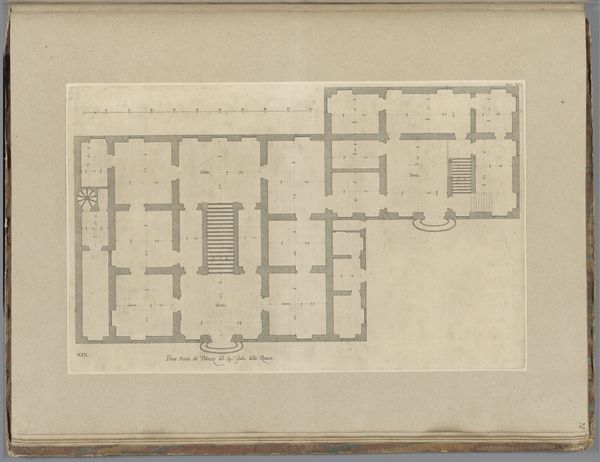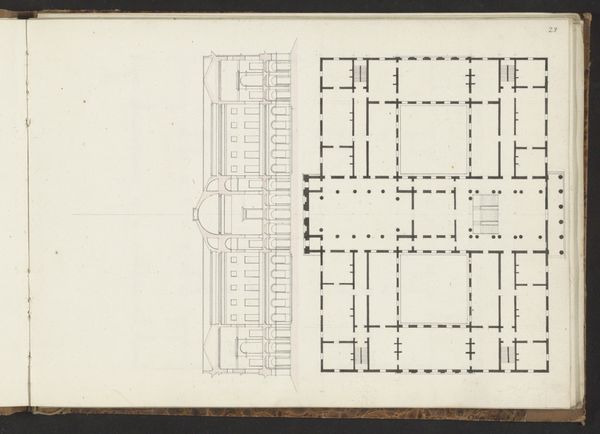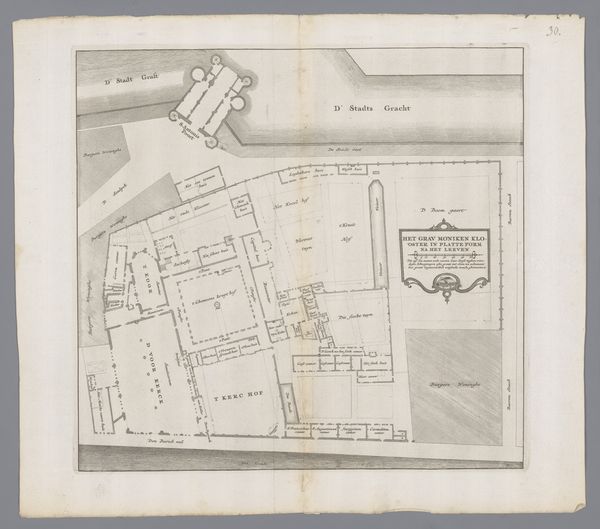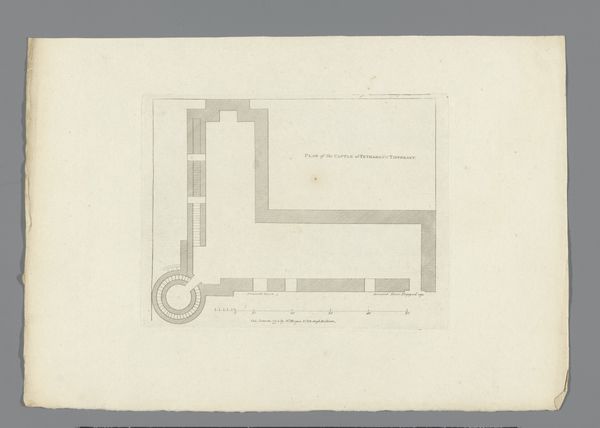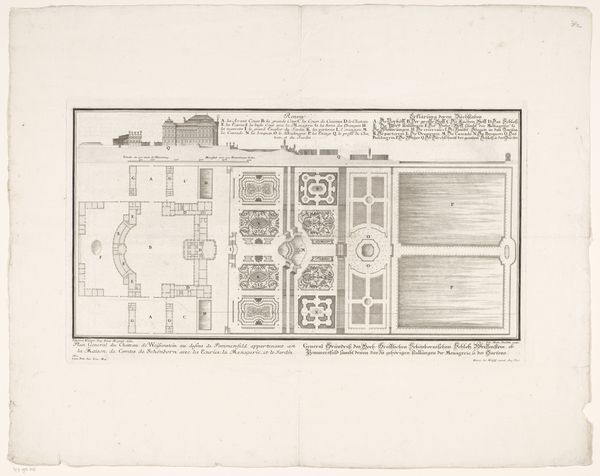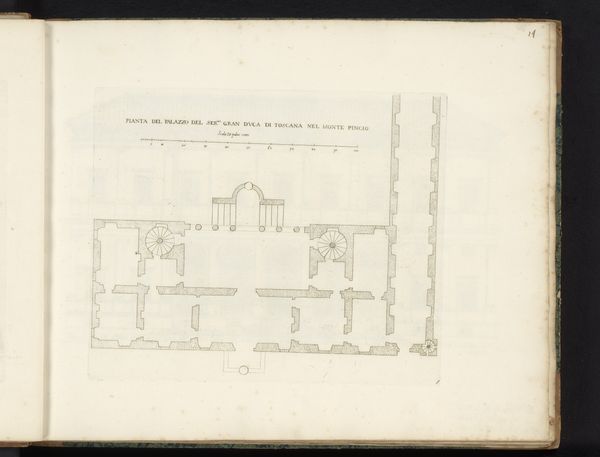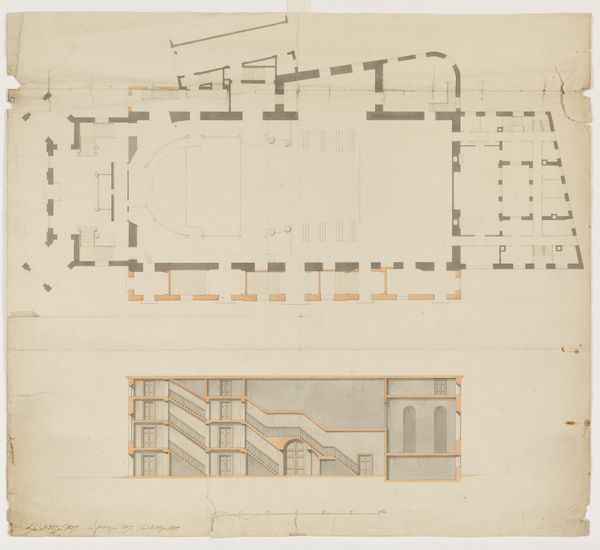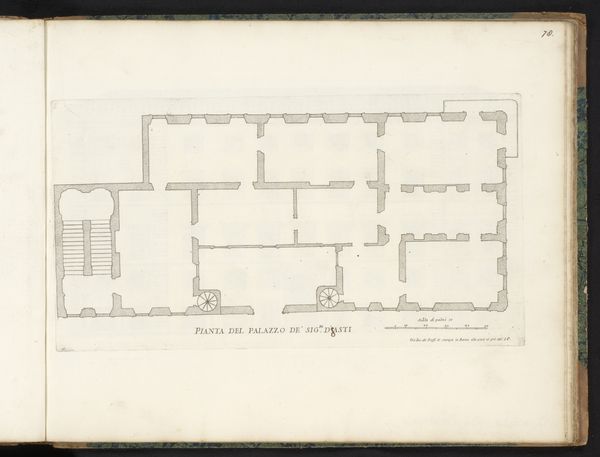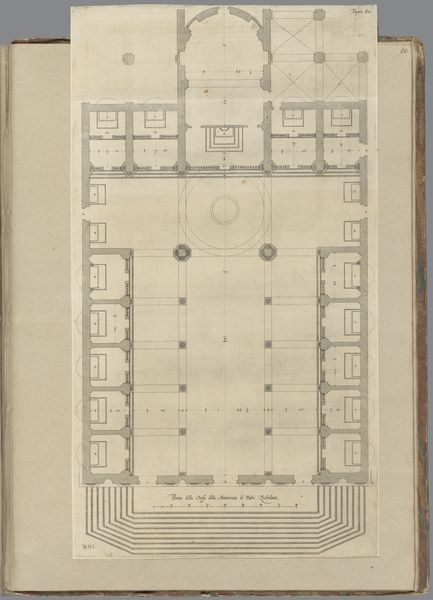
drawing, print, paper, ink, architecture
#
drawing
# print
#
paper
#
ink
#
architecture
Dimensions: height 270 mm, width 560 mm
Copyright: Rijks Museum: Open Domain
Curator: Well, that's quite a stark visual statement, isn't it? Extremely architectural. Editor: It is indeed. We’re looking at "Lijkstatie van Willem IV, 1752, plaat 40" created between 1754 and 1755. The artist, Jan Punt, worked with ink on paper. It’s currently held here at the Rijksmuseum. Curator: Yes, this precise ink rendering illustrates the floorplans of three churches, all plans for funerary services, which are meticulously detailed in annotations below. The linework itself possesses a sort of clinical precision. The structure of these spaces appears primary. Editor: It’s more than simply clinical. Notice the detail—one might assume it's just pen and ink, but zoom in, and it seems almost like meticulous etching, a slow labor. This print allows widespread participation in elite ritual, almost mass production of aristocratic mourning, printed for broadsides. Curator: An interesting consideration. I see instead, the deployment of geometric form –squares and lines – dictating emotional space. Each church possesses subtly divergent architectures dictating modes of receiving solemnity, wouldn't you agree? Editor: I'd say that while geometry indeed structures the aesthetic, the material conditions dictate this presentation. This distribution flattens grief—democratizing death, commodifying a somber tradition with widespread access. Consider the number of prints produced, and thus distributed. The meaning isn't held merely in shape, but circulation and audience. Curator: That touches upon fascinating territory— the relationship between intention and impact. Surely Punt, an academic drawing architectural schematics, thought less about this wide distribution of commodified grief, and more on capturing Euclidean exactness in the plates' compositions themselves. Editor: Perhaps. Though printers' choices can profoundly affect interpretations. If this had appeared solely within rarefied circles the print’s status as a reproduction enabling broad ritualistic experience lessens. It changes everything to recognize this reproduction's means. Curator: An apt concluding thought; by contemplating both visual composition and means of mechanical rendering, an unexpectedly layered vista unveils itself, granting, to us at least, fresh readings for an artifact historically classified purely on formal merits alone. Editor: And this union reveals not only the layout of spaces for ceremonies of state but also allows one to visualize more deeply how state ceremonies seeped into daily life via print and labor.
Comments
No comments
Be the first to comment and join the conversation on the ultimate creative platform.
